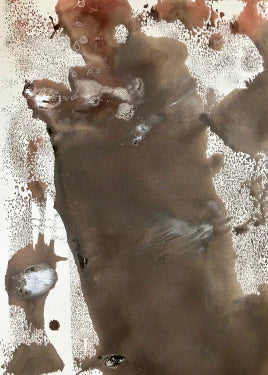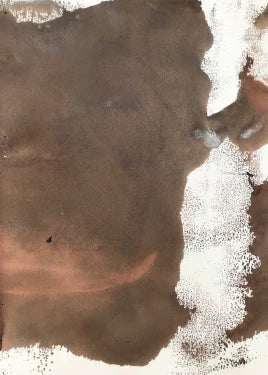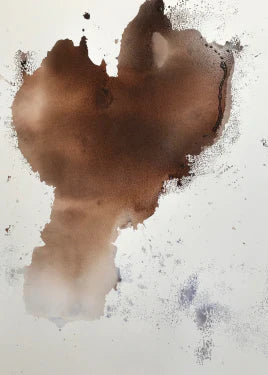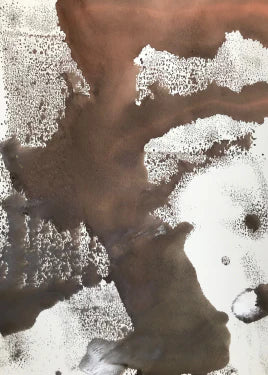collaboration
Is art an outcome or a process?
Artists Mary Jones and Darshana Shilpi Rouget spent one week in the same studio to experiment and explore their two styles of art-making together.
Mary Jones talks about the project:
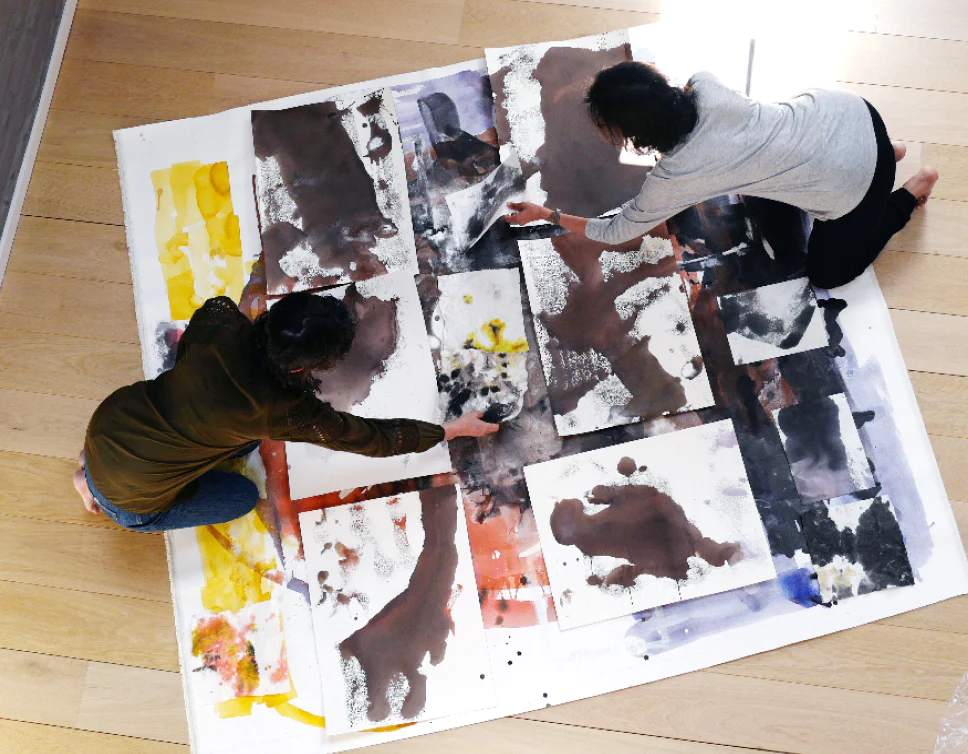
Tell us about your artistic practice.
As a painter I’ve come to rely on process and improvisation as a vehicle for content and personal discovery. My paintings are primarily abstract, colorful, and conscious of the interactions I make with my materials and gestures. They are about the shared imagination and awareness of our unique existence, with all its joys and pitfalls.
How long have you known each other? Have you ever worked together before?
I’ve known Darshana for at least 24 years. We actually met in a yoga class. We have worked together many times on design projects over the years, but this is the first on-site painting collaboration.
Why do you feel collaboration in art (or beyond) is important?
Collaboration is an intimate form of communication, very much like dance, or improvisational jazz, each person responds to the timing, space, and physical attributes of the other collaborators. The results can be beyond the scope of each individual, something neither could create on their own.
One must maintain very focused attention, and consciously lay a groundwork for the best of the collaborator’s skills to emerge, and to also inspire and respond with your own best riffs.

rubbings on evolan paper
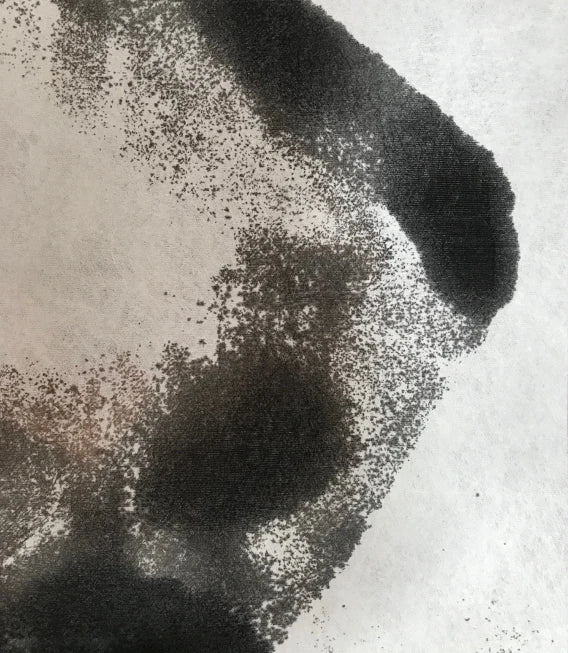
How did the concept for ‘rubbings, inks & printing’ evolve? What initially sparked the idea? Did you set yourselves a provocation?
Part of improvisation is response to materials, and to the moment. Being influenced by Jack Whitten’s charcoal and wax rubbings on evolan paper, I began to experiment with this new product in pieces of my own, keeping it around the studio to familiarize myself with its potential. Knowing Darshana’s aesthetic, her sensitivity to texture and touch, I made sure to have it in her studio too.
How did you feel during the process of the project? How does it reflect/conflict with your idea of art and practice?
We laid some guidelines for ourselves, which helped us navigate through many unpredictable passages. There are always moments of elation in creative work, and the opposite, the feeling of being flatlined and lost. We just kept going, throwing preconceived notions overboard and reaching out for new territory. We lost some beautiful pieces along the way, but gained others we couldn’t have anticipated. We were both especially pleased with the rubbings and prints.
Did anything surprise you about this process?
There were so many surprises. One that has stayed with me is that together, our best work is fluid, rhythmic, and compositional. We needed to cover a lot of ground without revision. What American poet Langston Hughes said about poetry proved true for us: “poems are like rainbows: they escape you quickly.” Much of our challenge was to recognize and capture the essence of what was happening before our eyes as we poured and brushed ink and paint onto the canvas spread on the floor. I couldn’t have foreseen the pace of our work, we went very far, very fast.
Did any issues/challenges arise?
We had learning curves with our materials and process - how our materials chemically reacted, in the most effervescent and elusive ways, changing before our eyes; their unpredictable drying times; even how the suppleness of a brush could make a profound difference. We were literally chasing rainbows.
How did you find the process of working together?
Darshana has many virtues, fortunately, one of them is patience, and another is capacity for risk. With her support and example, I felt free to take chances, to make mistakes, and to follow my instincts.
What did you learn about your own practice through the residency? How did you feel it challenged you, and will you be taking any new lessons into your own work as a result?
Darshana’s aesthetic is a confirmation of simplicity and honesty. Working in collaboration with her reminded me of the potential and power of these qualities, that a few elements with integrity and structure can have tremendous impact and content. I brought some unfinished pieces back to the studio from the residency and kept this in mind as I finished them. I want to continue to be more direct and open in my work.
Has the project shifted/confirmed your thoughts/philosophy of artistic practice or what art is?
I feel confirmed that art is vitally about relationships and interaction, and that it’s increasingly important to embrace this capacity in contradiction to the pressures of our commercially oriented moment. Art is a conversation that can expand in haptic ways to include the viewer. Our time and process during the residency continues to be experienced through the work that we made.
-
 Mary Jones
Mary Jones -
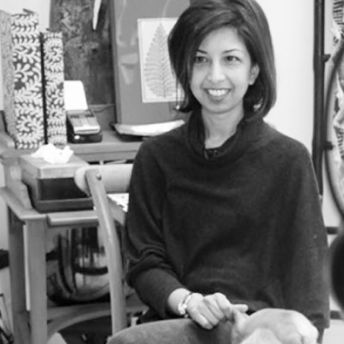 Darshana Shilpi Rouget
Darshana Shilpi Rouget

